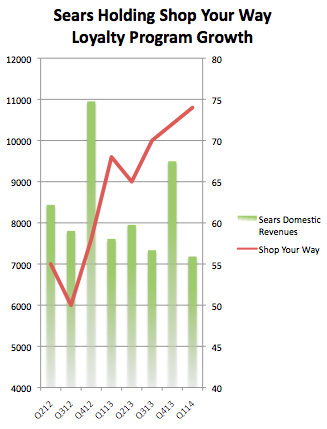Digital Transformation at Sears Holdings
Data-driven Personalization Fuels a Member-Centric Strategy
Can Sears Holdings re-gain profitability, marketshare, and mindshare through a combination of member rewards, personalized marketing, and excellent cross-channel customer experience? This is an intriguing case study in which financial engineering, combined with innovative use of technology to support personalized cross-channel customer convenience are being leveraged to remake an American retail icon. Will these strategies succeed? Or are they at odds with one another?
NETTING IT OUT
When Sears Holdings Corporation realized the threat that Digital Transformation posed to its future success, it embarked on a member-driven, integrated, cross-channel strategy. This integrated mobile/online/retail customer experience transformation has been led by Leena Munjal, SVP of Customer Experience and Integrated Retail.
The analytics to support a highly personalized cross-channel customer experience were put in place by SaiKoppaka, then Divisional VP, Customer Analytics (now with BEL USA). The shift to data-driven decision-making began with the CEO’soffice. Sai Koppaka identified three steps to success in the transformation to digital:
- Using the right data
- Having the right people
- Effective optimization
As a result, Sears Holdings realized impressive results, including a 10% annual growth in online and multi-channel sales. However, Sears Holdings is still struggling to re-invent itself by cutting overhead costs, divesting stores, and restructuring its real estate holdings. Will the digital transformation make enough impact to satisfy shareholders? What do you think?
Sears’ response, in the face of significant losses, is to transform itself into an integrated, multi-channel retailer and to gain a deeper understanding of its customers’ needs by treating customers as members; not consumers.
Sears Holding’s Business Transformation
Transforming to Respond to the Threat of Digital Transformation
In 1893, Sears, Roebuck and Company created a new type of business that changed retailing—and lives—across the nation. Its catalog linked people on remote farms to the biggest store in the country, freeing them from reliance on the local general store. The catalog brought new styles, ideas, and products to their doorsteps. Sears was America’s largest retailer until 1989.
Today, Sears Holding Corporation is a conglomerate of many brands and hundreds of stores, most notably those under the Sears and Kmart brands. It rode to success on the wave of one revolution—the postal and transportation network that linked the USA in the second half of the 19th Century. And its future success is threatened by another revolution, the digital transformation of retailing.
Sears’ response, in the face of significant losses, is to transform itself into an integrated, multi-channel retailer and to gain a deeper understanding of its customers’ needs by treating customers as members; not consumers.
Three Strategies Drive the Business Transformation
Sears Holdings’ has embarked on a major transformation of its retailing business focusing on its best members, its best stores, and its best categories of products.
BEST MEMBERS. Sears Holdings targets its most loyal customers by turning them into members, surrounding those members with both earned and surprise rewards, and.....(Customers.com Strategies and Technologies members may download this article to read the rest)
Sign in to download the full article
0 comments
Be the first one to comment.




